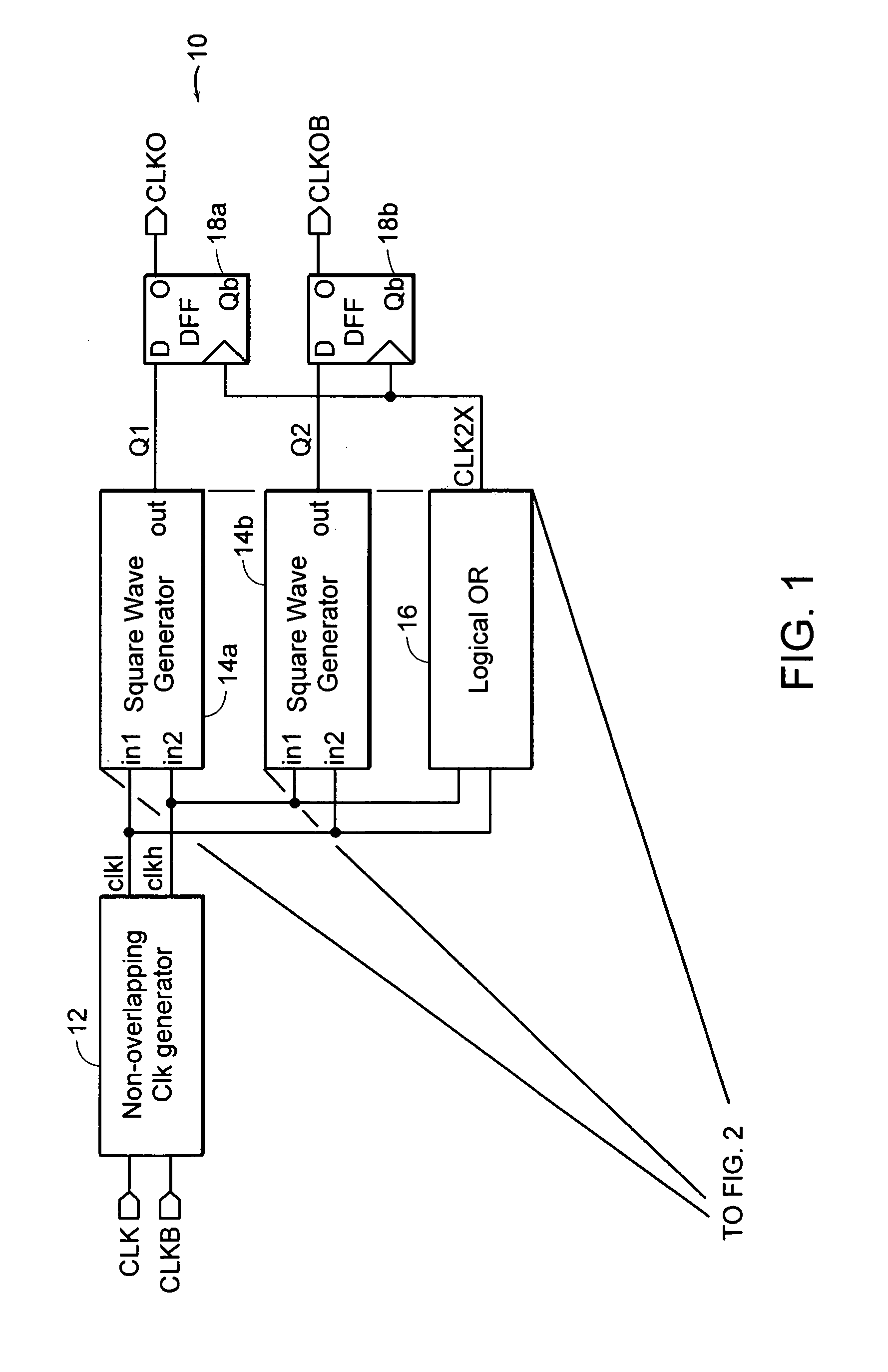System and method for reducing skew in complementary signals that can be used to synchronously clock a double data rate output
a complementary signal and clocking signal technology, applied in the field of electronic circuitry, can solve the problems of clock skew, delay of one clock relative, and jitter of one complementary pair, so as to minimize clock skew, jitter, and noise placed on complementary signals.
- Summary
- Abstract
- Description
- Claims
- Application Information
AI Technical Summary
Benefits of technology
Problems solved by technology
Method used
Image
Examples
Embodiment Construction
[0027]Turning now to the drawings, FIG. 1 is a block diagram of a circuit 10 used for generating complementary output signals that have little if any skew. Circuit 10 includes a clock generator 12 that generally operates as a mono-stable multi-vibrator, oftentimes referred to as a “one-shot.” One-shot 12 has only one stable state and a quasi-stable state. During operation, the one-shot remains in its stable state until a triggering signal is received, such as a rising edge on the true input clock signal (CLK) or the rising edge of the inverted input clock signal (CLKB). Upon receipt of the rising edges, the one-shot changes to the quasi-stable state for a fixed period of time. That time value is predetermined based on the cycle length of the true and inverted complementary pair of input signals. It is generally desired that the fixed period of time be somewhere less than ¼ cycle of the complementary pair of input signals, both of which transition at the same rate.
[0028]Circuit 10 al...
PUM
 Login to View More
Login to View More Abstract
Description
Claims
Application Information
 Login to View More
Login to View More - R&D
- Intellectual Property
- Life Sciences
- Materials
- Tech Scout
- Unparalleled Data Quality
- Higher Quality Content
- 60% Fewer Hallucinations
Browse by: Latest US Patents, China's latest patents, Technical Efficacy Thesaurus, Application Domain, Technology Topic, Popular Technical Reports.
© 2025 PatSnap. All rights reserved.Legal|Privacy policy|Modern Slavery Act Transparency Statement|Sitemap|About US| Contact US: help@patsnap.com



